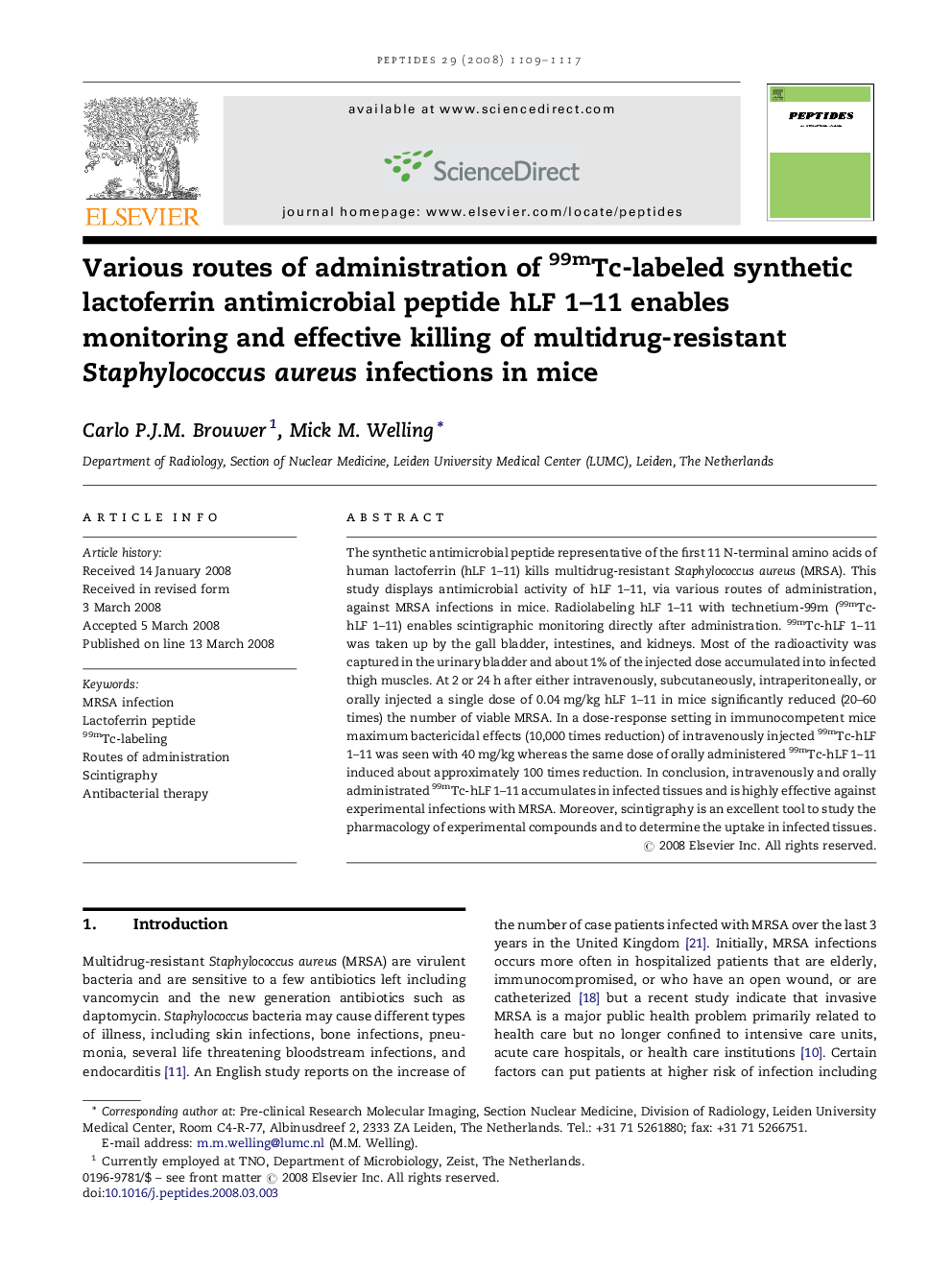| Article ID | Journal | Published Year | Pages | File Type |
|---|---|---|---|---|
| 2006975 | Peptides | 2008 | 9 Pages |
The synthetic antimicrobial peptide representative of the first 11 N-terminal amino acids of human lactoferrin (hLF 1–11) kills multidrug-resistant Staphylococcus aureus (MRSA). This study displays antimicrobial activity of hLF 1–11, via various routes of administration, against MRSA infections in mice. Radiolabeling hLF 1–11 with technetium-99m (99mTc-hLF 1–11) enables scintigraphic monitoring directly after administration. 99mTc-hLF 1–11 was taken up by the gall bladder, intestines, and kidneys. Most of the radioactivity was captured in the urinary bladder and about 1% of the injected dose accumulated into infected thigh muscles. At 2 or 24 h after either intravenously, subcutaneously, intraperitoneally, or orally injected a single dose of 0.04 mg/kg hLF 1–11 in mice significantly reduced (20–60 times) the number of viable MRSA. In a dose-response setting in immunocompetent mice maximum bactericidal effects (10,000 times reduction) of intravenously injected 99mTc-hLF 1–11 was seen with 40 mg/kg whereas the same dose of orally administered 99mTc-hLF 1–11 induced about approximately 100 times reduction. In conclusion, intravenously and orally administrated 99mTc-hLF 1–11 accumulates in infected tissues and is highly effective against experimental infections with MRSA. Moreover, scintigraphy is an excellent tool to study the pharmacology of experimental compounds and to determine the uptake in infected tissues.
